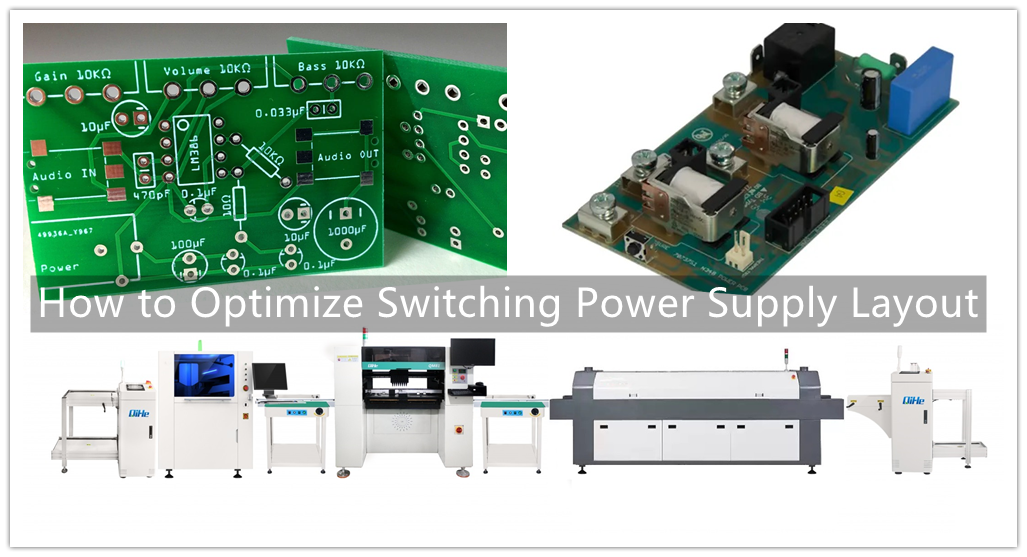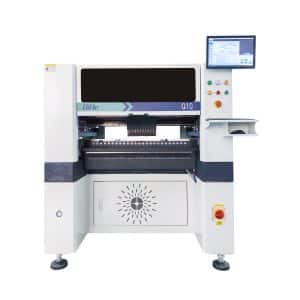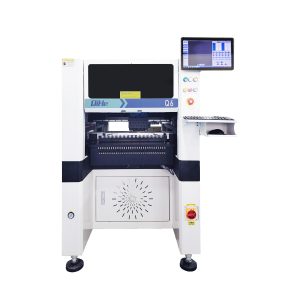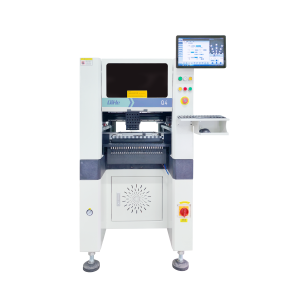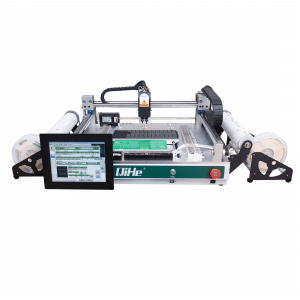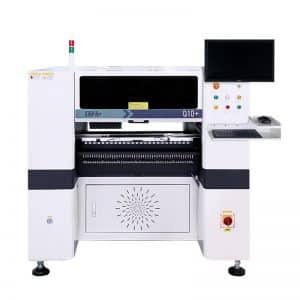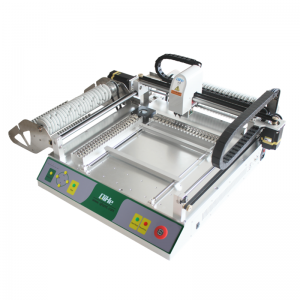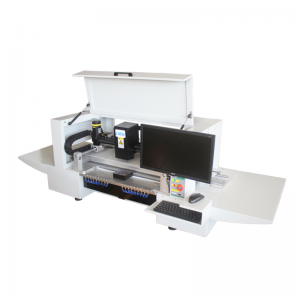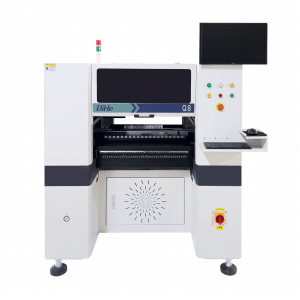In a successful power supply design, power supply layout is one of the most important links. However, everyone has their own opinions and reasons for how to do this. The truth is, many different solutions lead to the same goal; most power supplies will work fine if the design isn’t a real mess.Today qihe smt pick and place machine will share How to Optimize Switching Power Supply Layout .
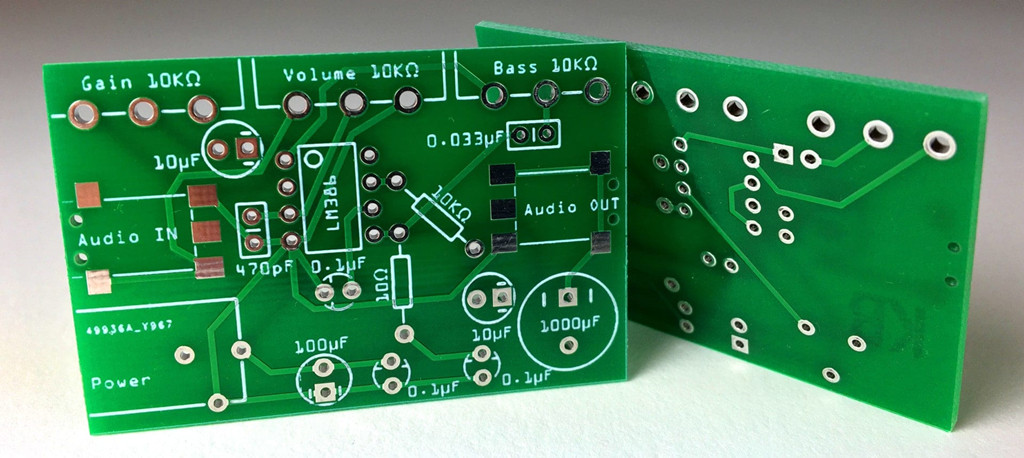
Of course, there are also some general rules, such as:
Do not run sensitive signals in fast switching signals. In other words, do not run feedback traces under switch nodes.
Make sure the power load trace and ground plane are sized enough to support the current flow.
Try to maintain at least one continuous ground plane.
Using enough vias (usually starting with 1A per via), connect the ground planes.
Beyond these basic layout rules, I usually start by identifying the switching loops and then determine which loops have high frequency switching currents.
There are two states in a buck power supply (assuming continuous conduction mode): when the control switch (Q1) is on and when the control switch is off. When the control switch is on, current flows from the input to the inductor. When the control switch is turned off, current continues to flow in the inductor and through the diode (D1). Continuous current output.
But there is input pulse current, and that’s what you need to be concerned about in your layout. In Figure 1, this loop is labeled “High Frequency Loop” and shown in blue. The first goal of your layout is to connect Q1, D1, and the input capacitor with the shortest, lowest inductance return path. The smaller this loop, the lower the noise generated by the switching. If this is ignored, the power supply will not work effectively.
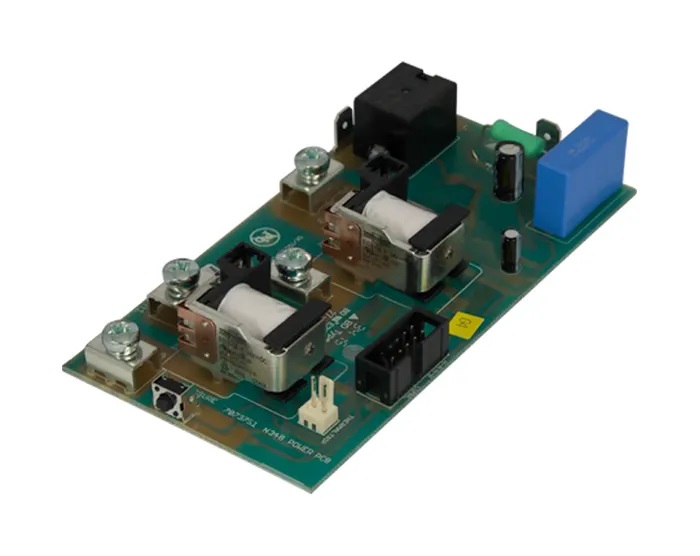
The procedure for identifying switching loops applies to all power topologies. The steps of the procedure are:
The current path is determined in the ON state.
Determines the current path in the off state.
Find the location of the continuous current.
Locate the location of the intermittent current.
Minimize discontinuous current loops.
The critical loops for a given power stage configuration are listed in this list:
Buck – input capacitor return.
Boost – output capacitor loop.
Inverting Buck-Boost – Input and Output Capacitor Loop.
Flyback – input and output capacitor return.
Fly-Buck™ – Input capacitor return.
SEPIC – output capacitor circuit.
Zeta——Input capacitor circuit.
Forward, Half-Bridge, Full-Bridge – Input Capacitor Loop.
Power supply layout is an art form, everyone has their own way, and many times it will work. Just make sure that when you locate parts for your power stage, you locate the high frequency switching loop first; you’ll save yourself time and frustration.
Read more: How to Optimize Switching Power Supply LayoutBest seller SMT Machine :Qihe smt line products
-
TVM925 SMT pick and place machine 4 head 38 feeders slots assembly of electronic components
-
Q10 SMT Automatic pick and place machine 10 Heads 100 Slots High Precision and High Efficiency SMT/LED Assembly
-
Q6 SMT pick and place machine 6heads 50slots With PCB Rail Servo Pick&Place Machine
-
Q4 SMT pick and place machine 4heads 50slots With PCB Rail Servo Pick&Place Machine
-
TVM802B Plus SMT pick and place machine 2heads 58slots desktop pick&place deluxe edition
-
QM10 SMT pick and place machine 10heads 80slots Fully Automatic Chip mounter SMT Assembly
-
TVM802BX SMT pick and place machine 2heads 46slots desktop pnp mounter deluxe edition
-
QL41 SMT pick and place machine 4heads 8slots LED for 1.2meters led strip pick&place machine
-
Q8 SMT pick and place machine 8heads 80slots Fully Automatic Chip mounter SMT Assembly
What is SMT in engineering?
Surface mount technology is a part of the electronic assembly that deals with the mounting of electronic components to the surface of a PCB. Electronic components mounted this way are called surface-mounted devices (SMD). SMT was developed to minimize manufacturing costs while making efficient use of board space.Qihe SMT company develops and produces all kinds of SMT equipment suitable for world wide market, including pnp machine,reflow oven,stencil printer,pcb handling machines,and other products.
Small desktop pick and place machine TVM802A,TVM802B,TVM802AX,TVM802BX series suitable for beginners, for hobbiest or low vol usag.
Advanced level 4-head LED strip placement QL41 led machines and with rail universal series TVM925S,TVM926S,
Fully automatic 6-10-head placement QM61,QM62,QM81,QM10,machines, which are suitable for high volume mass production in factories.
Know more about us https://www.qhsmt.com/about-qihe-smt-equipment/
Follow us on social media https://www.facebook.com/Qihesmt/
What is SMT in programming?
Offline Automated Programming vs Inline SMT Programming
Qihe pick and place machine can be programmed directly on the SMT equipment .
Or Coordinates can also be imported csv file through programming software.
Currently supported software such as protel,DXP,Altium Designer,Pads,Candes,proteus,DXP.
Inline SMT programming is a solution to consider for narrow segments of device programming requiring short programming times, with medium to high volume, for just one device type.
WHAT IS SMT pick and place machine?
SMT (Surface Mounted Technology) is a comprehensive system engineering technology, which covers substrates, design, equipment, components, assembly processes, production accessories and management. When it comes to SMT pick and place machines, the automatic SMT production line requires automatic loading and unloading machine, automatic solder paste printing machine, placement machine, reflow soldering machine, AOI inspection equipment, conveyor,connecting table, etc. For these SMT assembly line equipment, Qihe SMT can offer you machines in prototype SMT line, small SMT production line, mass production SMT line at low SMT line cost. Contact us now if you are interested.
WHAT IS SMT ASSEMBLY LINE?
With the development of technology, future electronic products will be lighter, smaller and thinner. Traditional assembly technology can no longer meet the requirements of high-precision and high-density assembly. A new type of PCB assembly technology-SMT (Surface Mount Technology) has emerged. SMT Assembly is the use of automated machines to assemble electronic components on the surface of the circuit board. Its density, high speed, standardization and other characteristics occupies an absolute advantage in the field of circuit assembly technology. In addition, SMT assembly has a wide range of uses.
https://www.qhsmt.com/fully-automatic-smt-pick-and-place-machine-line/

